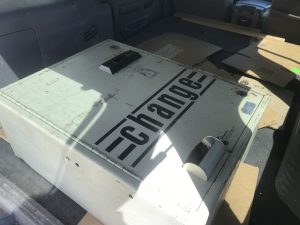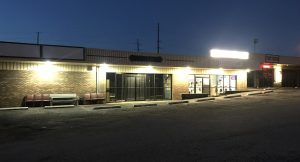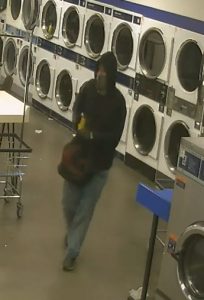LAUNDRY INDUSTRY OVERVIEW
Definitions and Background
The term coin laundry is defined as commercial-grade, self-service laundry equipment placed into service in a retail space. Coin laundries generally occupy the retail space on long-term leases (10-25 years) and generate steady cash flow over the life of the lease. Coin laundries are unique small businesses in that they have no inventory or receivables. A minority of coin laundries employ attendants.
Coin laundries can range in market value from $50,000 to more than $1 million and can generate cash flow between $15,000 and $200,000 per year. Business hours typically run from 6 a.m. to 10 p.m. The stores usually occupy 1,000 to 5,000 square feet of retail space, with the 2002 average being 2,260 square feet. New coin laundries are valued based on actual construction and equipment costs while existing coin laundries are valued based primarily on revenues. Coin laundries are perfect examples of passive income generators. Coin laundries are also referred to as coin-op laundries, coin-operated laundries or laundromats.
Coin laundries are one part of the self-service laundry business; the industry is actually comprised of two distinct segments. The first is coin-op laundries, and the second is represented by coin-operated machines located in apartment housing. This apartment segment of the business is referred to as the multi-housing laundry business or the coin route business. These two segments frequently overlap; in more mature markets, the self-service laundry business is estimated to be evenly split between the two. The self-service laundry market consists of an estimated primary customer base of 86 million people living in rental housing, as of the 2000 U.S. Census. The secondary customer base consists of the nonrental population, which uses coin laundries only occasionally.
The coin laundry industry is approximately 60 years old and is primarily composed of individual owner/operators. No significant franchises are in operation at this time. Currently, there are about 35,000 coin laundries in the United States, generating nearly $5 billion in gross revenue annually. Clean clothes, like food and shelter, are considered a necessity of life and coin laundries provide a basic health service for millions of Americans. While coin-ops are found in virtually all neighborhoods across the country, stores seem to perform exceptionally well in predominately renter-occupied, densely populated areas. These areas are increasing in number with each year throughout the country. The intense population growth, coupled with the expansion of rental housing, has increased the customer base for coin laundries.
Coin laundries thrive in periods of both growth and recession. During periods of recession, when home ownership decreases, the self-service laundry market expands as more people are unable to afford to repair, replace or purchase new washers and dryers, or as they move to apartment housing with inadequate or nonexistent laundry facilities. The market size grows proportionately to the increase in population. The public will always need this basic health service – people always need to wash clothes!
Trends and Characteristic
Industry growth is based on the demographics of population density, population mix and population income. The more concentrated the population, the greater the need for quality coin laundry facilities. National and regional demographics indicate renters, the primary users of coin laundries, are the fastest-growing segment in the nation. As of the 2000 U.S. Census, 31 percent of the nation’s 116 million households were renter occupied. The number of coin laundry stores built over the past 60 years has grown steadily as the population has increased and shifted to more concentrated areas. The end result has been a mature, stabilized industry with predictable rates of turnover and values of existing coin laundries, development of new turn-key facilities, and equipment expansion and replacement.
Marketing Environment
Coin laundries normally sell for a multiple of their net earnings. The multiple may vary between three and five times the net cash flow, depending on several valuation factors. The following primary factors establish market value:
The net earnings before debt service, after adjustments for depreciation and any other nonstandard items including owner salary or payroll costs in services
The terms and conditions of the real estate interest (lease), particularly length; frequency and amount of increases; expense provisions; and the overall ratio of rent to gross income.
The age, condition and utilization of the equipment, and leasehold improvements; the physical attributes of the real property in which the coin laundry is located, particularly entrances/exits, street visibility and parking
Existing conditions, including vend price structure in the local marketplace
The demographic profile in the general area or region
Replacement cost and land usage issues
This resale market standard assumes an owner/operator scenario, with no allocation for outside management fees. Marketing time for store sales averages 60 to 90 days, depending on price, financing terms and the quality and quantity of stores available at the time of sale. Coin laundry listings are generally offered by business brokers who charge a sales commission of 8 percent to 10 percent. Many coin laundry distributors also act as brokers.
The accepted standard of useful life for commercial coin laundry equipment is as follows:
Topload Washers (12 lbs. to 14 lbs.): 5-8 years
Frontload Washers (18 lbs. to 50 lbs.): 10-15 years
Dryers (30 lbs. to 60 lbs.): 15-20 years
Heating Systems: 10-15 years
Coin Changers: 10-15 years
This schedule will vary upon usage, sales volume and maintenance. Useful life may differ for accounting or tax purposes.
Operations and Performance Levels
Coin laundry operations consist of three basic areas: janitorial, maintenance and the handling of money (which consists of collections and loading coin changers). Bookkeeping, administration, and banking are typically off-site management areas. A standard profit and loss statement for a coin laundry typically includes the following line items:
Income, consisting of wash and dry
Other income, which would include vending, drycleaning and/or wash-dry-fold service
Expense categories would typically consist of:
Accounting
Advertising
Insurance
Legal costs
Licenses
Maintenance (includes parts and labor)
Payroll (usually limited to on-site work–i.e., janitorial or employees)
Personal property tax
Rent
Common Area Maintenance (CAM) charges, also known as Net charges including real estate taxes, maintenance, insurance, and other charges
Utilities (gas, water, electric and sewer)
Vending expenses
Miscellaneous costs (including wholesale drycleaning costs, fluff-n-fold supplies, and labor)The percentage for each category will vary from store to store and region to region. Interest charges, depreciation and other non-standard items, such as owner salary, generally appear on tax returns but are excluded from the standard profit and loss statement for purposes of valuation and determination of cash flow.
Sales volume, and/or individual store performance varies, based on a number of factors. These factors may include demographics; overall services offered; design and general condition; equipment selection, condition and vend prices; hours of operation; exposure of the building; parking; and competition.
National surveys, conducted by the Coin Laundry Association, indicate a wide range of performance for individual stores and types of equipment. The industry terminology for individual equipment performance is cycles per day, or turns per day (TPD). These designations refer to the number of times per day, on average, each machine is used. While this statistic varies widely, based on many factors including those indicated above, the range for washing machines is generally from three TPD to as high as eight TPD or more. The primary factors affecting TPD include: population demographics, such as density and percentage of renters; capacity and quantity of the washers; the vend prices charged; and the prevailing market vend prices.
Dryer income can vary greatly due to: total wash poundage generated; overall vend prices of both washers and dryers; heating efficiency of dryers; total number of dryers in relation to washers; and dryer size and capacity. Dryer income is usually expressed as a percentage of overall income. Generally, dryer income varies between forty and sixty percent of total washer income. Income and expense percentages may vary significantly for stores offering additional services such as dry cleaning and fluff and fold.
Summary
Today’s coin laundry industry is a strong and vibrant one. Even more appealing is the fact that this dependable public service industry continues to grow and thrive. The demographic trends toward an even greater apartment dwelling segment of the population predict continued prosperity.
The Coin Laundry Association (CLA) used statistics, surveys and other sources to provide the information contained in this overview of the coin laundry industry. While the information has been given to CLA by business owners and other sources that appear reliable, CLA in no way, expressed or implied, guarantees the accuracy or validity of the information provided herein.
Prospective parties interested in the industry are advised to consult the appropriate professionals and experts before making any major decisions. The Coin Laundry Association, the only national trade association for the coin laundry industry, is the best place to begin your journey into the business. CLA offers a number of educational, promotional and cost-saving programs for coin laundry operators
This article has be reprinted from the Coin Laundry Association website.
The full article can be found HERE
If you have any comments please post them below.
Ken




